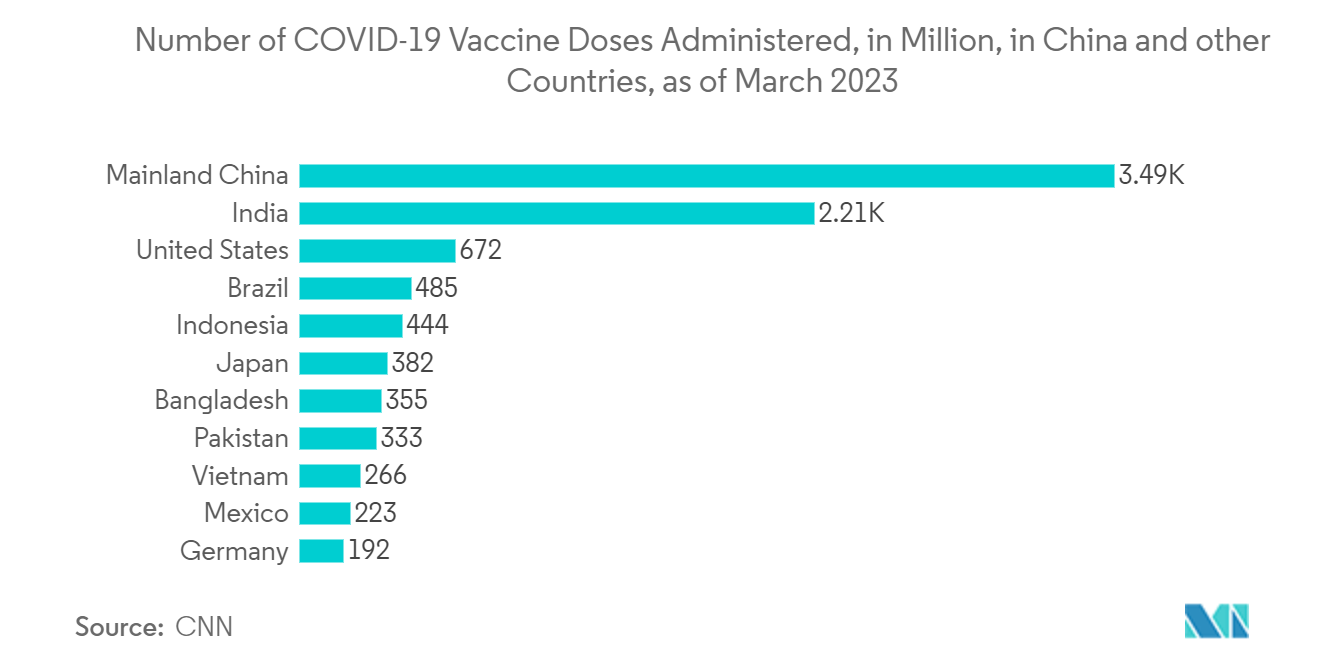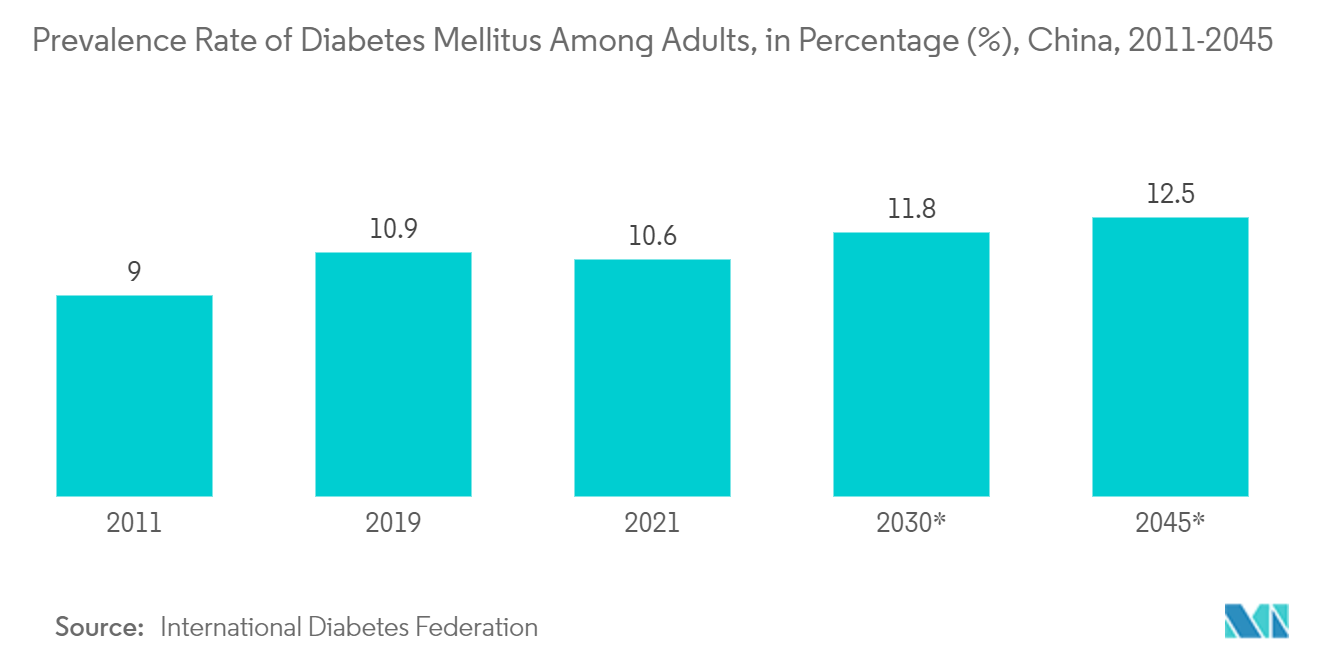Market Trends of China Pharmaceutical Packaging Industry
Berlin Leads in Total Warehousing Take-up
- The Chinese pharmaceutical glass ampoules and vials market is expected to expand as China has established a standard framework for the pharmaceutical industry. The country is increasingly focusing on the stability of pharmaceutical packaging materials during drug storage and the safety of the packaging when used. Pharmaceutical companies increasingly use glass packaging because of its durability, non-reactivity, transparency, eco-friendliness, and versatility. Additionally, glass vials are in high demand due to increasing investment and R&D in healthcare systems and rising drug spending.
- Notably, the demand for vials and ampoules has grown due to the demand for medications and vaccinations related to the COVID-19 pandemic in the past few years. Manufacturers of pharmaceutical and parenteral packaging have greatly boosted their capacity for production. Millions of vials and ampoules are produced monthly by manufacturers operating at full capacity.
- According to CNN, as of March 2023, approximately 13 billion COVID-19 vaccine doses had been administered globally, with Mainland China accounting for almost 3.491 billion of this total.
- Glass vials and ampoules are becoming more widely used in developed countries. As a result of COVID-19, the healthcare and pharmaceutical sectors are growing in emerging nations, which presents the potential for the Chinese market. Additionally, players operating in the region focus on increasing their production capacity.
- Similarly, the demand for vials and ampoules among end users of pharmaceutical and life sciences is increasing. The market continues to favor these end users for demand variation, so players are concentrating on launching new products.
- In October 2023, the glass pioneer SCHOTT introduced next-generation type I Borosilicate glass tubing. This new product and its associated services will support three key trends in the pharma industry: the development of complex pharmaceuticals, sustainability, and digitalization. Pharmaceutical converters use the company’s glass tubing to produce high-quality vials, ampoules, syringes, or cartridges to store simple and complex drugs. In particular, the company sees an increasing demand for biopharmaceutical products in the future, where packaging and materials will need to meet more stringent requirements and regulations.

Fashion and Apparel Segment to Lead in Revenue
- Folding cartons constitute the most popular type of secondary packaging product. These cartons are versatile and can be used in many ways. Folding cartons offer several advantages, including flexibility, rigidity, and easy and cost-effective flat-pack shipping and storage. The folding box packaging ensures the safety of pharmaceutical products by protecting them from external factors like light, moisture, and contamination. This protection helps preserve the potency and integrity of the medications. Implementing radio-frequency identification (RFID) smart labeling technology to prevent product replication in the pharmaceutical industry will also contribute to market expansion.
- The demand for printed pharmaceutical cartons is rising due to the industry's stiff competition. In addition to providing ample space for regulatory information and brand advertising, these cartons also offer more room than small bottles, vials, and containers. The latest printed pharmaceutical packaging market innovation incorporates tamper-evident and child-proof features. These features are achieved through advanced material technology and design, further driving the demand for pharmaceutical printed cartons.
- The problem of inadequate medication adherence is prevalent, leading to an increase in chronic disease complications and healthcare expenditures. Packaging interventions such as pillboxes and blister packs have been widely recommended to address this issue, leading to a growing market for such products.
- Pillboxes are reusable multi-compartment containers designed to hold medications to be consumed at specific times. Unlike blister packs, they do not require professional action and can be filled by patients, informal caregivers, or healthcare providers. Multiple healthcare providers recommend using blister packs, pillboxes, and folding cartons as secondary packaging with medication information for the aging with multiple chronic diseases.
- The Chinese pharmaceutical market is still one of the most important in terms of growth prospects and market size. The expansion of insurance coverage, the aging population, the growing middle class with higher healthcare needs, and chronic diseases are the main reasons for this growth.
- According to the International Diabetes Federation, the forecasted prevalence of diabetes among adults in China will be 12.5 % by 2045. Blister packaging is the most common type of pharmaceutical packaging used in China. Major pharmaceutical companies use sturdy and versatile folding carton packaging to protect the blister. Therefore, with the growth of pharmaceutical blister packaging, there would be a consequent growth in demand for folding cartons.

